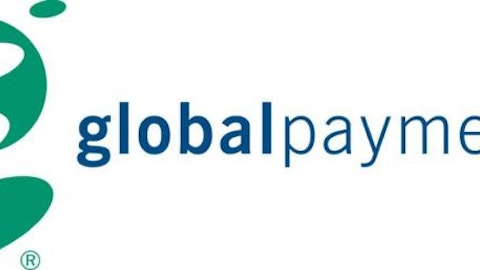While we are beginning to see some stabilization in key areas, we’ve recognized that we still have work to do. We continue to see broad trip consolidation and lower overall spending by consumers within the total market. And when we look at the Family Dollar shopper, it is clear that she has continued to face economic headwinds even as the broader market has experienced arecovery.
Macro challenges including lack of wage growth, persistent low labor force precipitation and rising housing and health insurance costs may continue to adversely impact low and middle income customers. However, lower gasoline prices should provide some relief in the near-term for many households who live paycheck-to-paycheck.
As we put the first quarter behind us and look to the rest of fiscal ‘15, our team is focused on improving execution and increasing profitability. Our store operations teams remained focused on improving the customer shopping experience in stores, key priorities include continuing to reduce employee turnover at store level and improving operational execution.The in-store experience starts with the quality and experience of the store team. I am especially pleased to report that we continue to reduce store manager turnover in our stores.We are also making it easier to monitor and track execution and compliance at store level. With our enhanced portal project manager, we can provide our store teams with specific easy to understand directions from merchandising displays, marketing campaigns, and price changes, and with our new mobility platform, our field leadership teams are able to access store level analytics and accession reporting to the newly deployed iPads, enabling them to identify opportunities and target store level tasks that have the greatest operational impact.
Our merchandising teams remained focused on strengthening our price perception and improving the profitability of our assortment. The pricing investments we initiated last year to strengthen our price perception and improve our [competitiveness]continued to mature.
As a reminder, in the third quarter of fiscal ’14, we invested more than $50 million on an annualized basis to improve our value perception with customers by lowering prices on nearly 1000 basic SKUs. While these investments are pressuring topline growth and merchandise markups, we continue to experience mid single-digit increase in unit sales on these items. To mitigate the impact of the price reductions and to reinforce our everyday value proposition, we have reduced our use of promotions. We have not eliminated our use of circulars, but we have reduced the frequency to reflect when our customers are most responsive. While we are still in the midst of this transition, we believe that most of the significant changes are behind us.
In addition to the pricing investments we initiated last year, we are strengthening our value proposition by continuing to expand our use of key opening price points. We are also continuing to refine the merchandise assortments to both consumables and discretionary categories to drive traffic to make it easier for our stores to manage the flow of merchandise and to improve inventory productivity.
Before Mary reviews the financials, let me give you an update on some of the longer term initiatives. First, our deployment of checkpoint, a new security tagging system is nearly complete. And we are on track to complete the rollout by the end of fiscal ‘15.To date, we have installed the new system in 7600 stores and we continue to experience very encouraging results. We are also expanding our supplier support of the program. Importantly, checkpoint stores continue to report better shrink results than stores without the new system.
Second, as we discussed last quarter, we have launched a multi-year effort to cluster store assortments based on a number of factors, including customer demographics, market dynamics, space productivity, and competitive influence. Our goal is to drive increased productivity through more customer-centric assortments in store layout, improve supply chain flexibility and increase store execution.
In our work-to-date, we have identified five clusters that share common traits and productivity trend. We have begun looking at merchandising strategies through the lens of these clusters to address some of our core business challenges. While we are still in the test-and-learn mode, we are encouraged by what we have learned and the opportunity to leverage the diversity of our store base to improve our financial returns.





